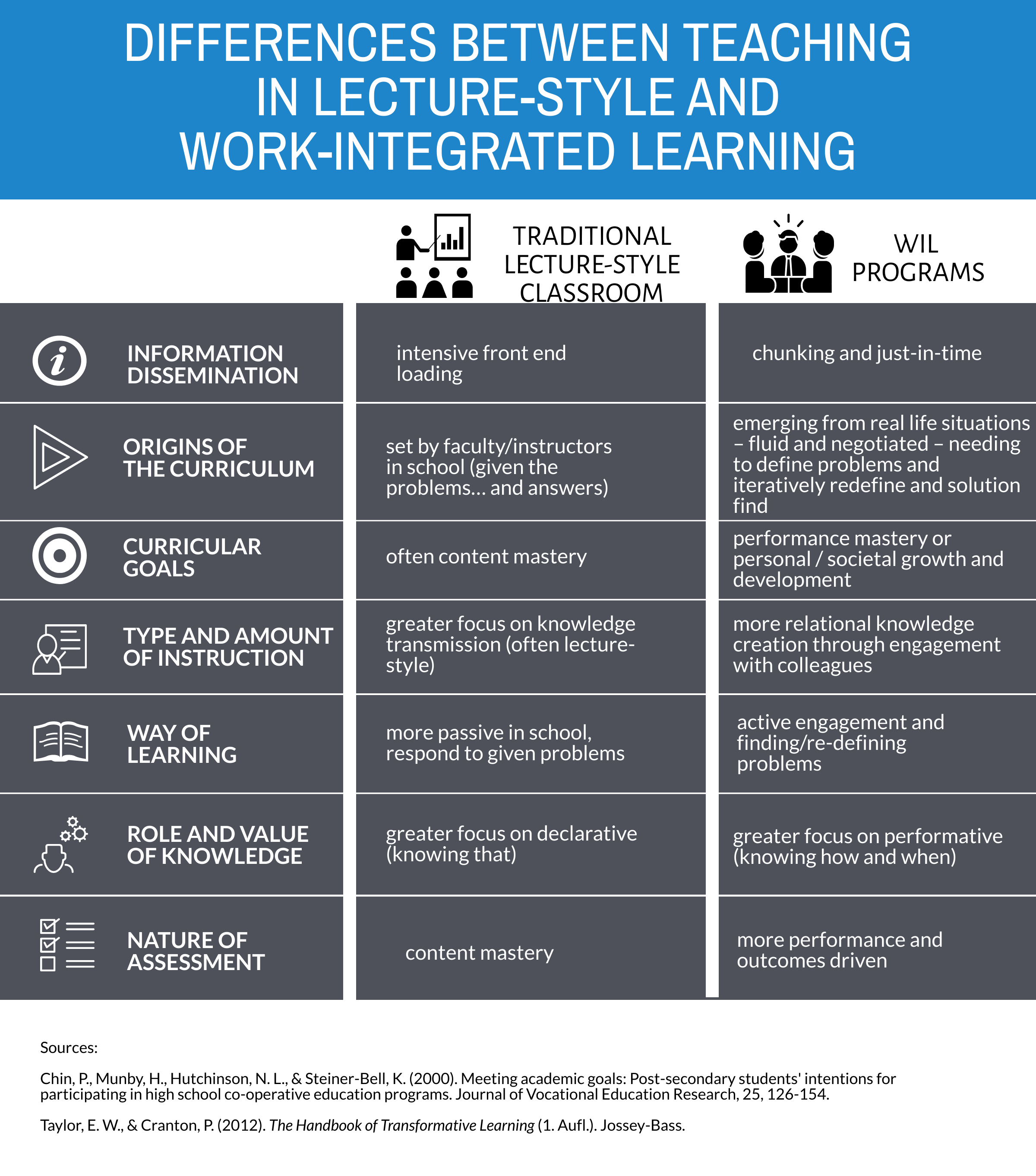What Makes WIL Different?
What Makes WIL Different from Experiential Education in the Classroom?
Your role as a WIL Practitioner and your students’ roles as work-integrated learners, differ from the traditional (i.e., the teacher lectured at the front of the classroom) teacher-learner roles that many of us experienced in school. It is important to consider those differences to help you recognize and support the unique learning that can result when students take a much more active role in their learning.
Your role as a WIL Practitioner in supporting student learning is also quite different from a traditional classroom context. It is much more one of facilitator and coach in that you help the learner identify and work through the many learning opportunities that present themselves through their WIL activities. Most often these present first as problems, but with support from you, they can often be reframed as learning opportunities and the student then actively engages in determining the solutions.
There are exceptions, of course, where reframing the problems is not appropriate as some arise from systemic oppression such as racism, sexism, homophobia and so on and are often experienced in the form of microaggressions.
- What kind of supports are available to students with these kinds of issues?
- What kind of supports / education might you need to be able to support students through these kinds of issues?
You will read about transformative learning in more depth in an upcoming section and will explore how to best support students during these moments. When guided appropriately through these moments, students often report they completely change how they think about or would respond to a similar event in the future because the experience (and subsequent deep self-reflection and questioning) significantly transformed their previous perspectives and actions. Most of these rich sources of learning cannot be predicted in advance because they emerge from each experience in real time and are unique for each student. This learning is often at the core of "life changing" experiences reported by experiential education students and, when well supported, they represent the unique potential of EE to resonate deeply with each individual.
Beyond the different teaching and learning roles and styles, WIL programs are clearly different from traditional lecture style teaching in many other ways, including their design, support, and evaluation, as shown in the infographic below.

Differences Between Lecture and WIL Transcript.docx
Reflective Prompts
 |
Record your ideas in the reflective journal. Pause for a moment and think about your role in support of students at all stages of the WIL journey. Do you feel that your role is an educative one? What we mean by educative is that your interactions with your students includes reciprocity and are grounded in the element of exchange. We can think of it in terms of the WIL Practitioner as not simply a placement officer, rather, playing an active role in helping the WIL student get the most from their experience. In thinking about it this way, both the student and WIL Practitioner contribute to what is brought into the educational relationship and this will certainly differ for the WIL student at different stages of their WIL journey. |